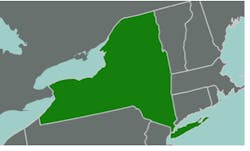NYSDA applauds passage of dental hygiene collaborative practice legislation
August 9, 2013
This week, legislation was passed offering New York dental hygienists working in Article 28 facilities – hospitals, nursing homes, school-based health clinics – the opportunity to work under collaborative agreements with dentists who have formal agreements with the facilities.
The legislation (A.7866, sponsored by Assemblywoman Deborah Glick and S.5757, sponsored by Senator Kemp Hannon), passed in both the New York State Assembly with a vote of 138-2 and in the Senate with a vote of 60-3. Governor Andrew Cuomo is expected to sign the legislation into law.
North Carolina passes dental legislation
ADHA responds to ADA reports on economic viability of mid-level providers
Under these collaborative agreements, the dentist must no longer be physically available to the location in order to provide general supervision to the dental hygienists. Instead, a dentist who has a formal relationship with a specific Article 28 facility will be able to work out a collaborative agreement with a dental hygienist at the same facility. Previous proposals that suggested a hygienist work with a dentist who could have been practicing on the other side of the state have been laid to rest, according to a press release issued by the New York State Dental Association (NYSDA).
The NYSDA hopes that with the passage of the law, access to dental care for New Yorkers will be improved.
The association had been pushing for legislation for collaborative agreements with dental hygienists since 2008, but many hygienists opposed the 2008 legislation. This year, Governor Cuomo included collaborative practice proposals in the 2013-2014 State Budget, but they were dropped due to lack of support from the Assembly. Therefore, Assemblywoman Glick offered her own bill to address the issue of the general supervision requirement.
This new bill was still opposed by dental hygienists who wanted to expand their functions. The NYSDA stated that the hygienists’ claims that their position was reflective of that of a nurse practitioner “were not taken seriously by legislators” and “many nurse practitioners were dismayed by the comparison.”
2011 New York City metropolitan area dental hygiene salaries and benefits
A representative of the Dental Hygienists’ Association of the State of New York (DHASNY) replied that the association’s concerns with the law were with the particular language used in respect to “the practical use of the provisions.” Having the collaborative agreement revolve around an Article 28 facility limits registered dental hygienist-collaborative practice professionals (RDH-CP) from practicing in other areas of need. In fact, according to DHASNY, the whole foundation of the RDH was to provide preventive services to people who don’t have access to dentists.
Regardless of the disagreement between many dentists and dental hygienists, both sides state they will work to make the best of the new law. NYSDA President Dr. Joel M. Friedman called it a “great legislative victory for dentistry.”


